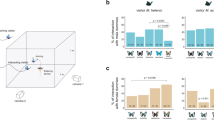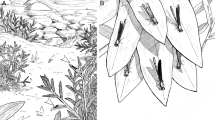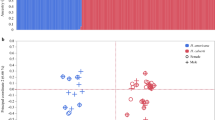Abstract
FOUR distinct morphs of the common savannah butterfly Danaus chrysippus are found in the region of Dar es Salaam, Tanzania. These forms have been described1 and their relative frequencies on the campus of the University of Dar es Salaam during 5 months of sampling are known2. The dorippus and chrysippus forms are relatively common while alcippus and albinus are both rare.
This is a preview of subscription content, access via your institution
Access options
Subscribe to this journal
Receive 51 print issues and online access
$199.00 per year
only $3.90 per issue
Buy this article
- Purchase on Springer Link
- Instant access to full article PDF
Prices may be subject to local taxes which are calculated during checkout
Similar content being viewed by others
References
Owen, D. F., and Chanter, D. O., Rev. Zool. Bot. Afr., 78, 81 (1968).
Smith, D. A. S., Nature, 242, 129 (1973).
Sheppard, P. M., Heredity, 6, 239 (1952).
Author information
Authors and Affiliations
Rights and permissions
About this article
Cite this article
SMITH, D. Negative Non-random Mating in the Polymorphic Butterfly Danaus chrysippus in Tanzania. Nature 242, 131–132 (1973). https://doi.org/10.1038/242131a0
Received:
Issue Date:
DOI: https://doi.org/10.1038/242131a0
This article is cited by
-
Incomplete sexual isolation in sympatry between subspecies of the butterfly Danaus chrysippus (L.) and the creation of a hybrid zone
Heredity (2003)
-
Predator induced colour polymorphism in Danaus plexippus L. (Lepidoptera: Nymphalidae) in Hawaii
Heredity (1990)
-
Polymorphism of the tropical butterfly, Danaus chrysippus L., in Africa
Heredity (1984)
-
Apostatic selection of distasteful prey
Heredity (1981)
-
All-female broods in the polymorphic butterfly Danaus chrysippus L. and their ecological significance
Heredity (1975)
Comments
By submitting a comment you agree to abide by our Terms and Community Guidelines. If you find something abusive or that does not comply with our terms or guidelines please flag it as inappropriate.



